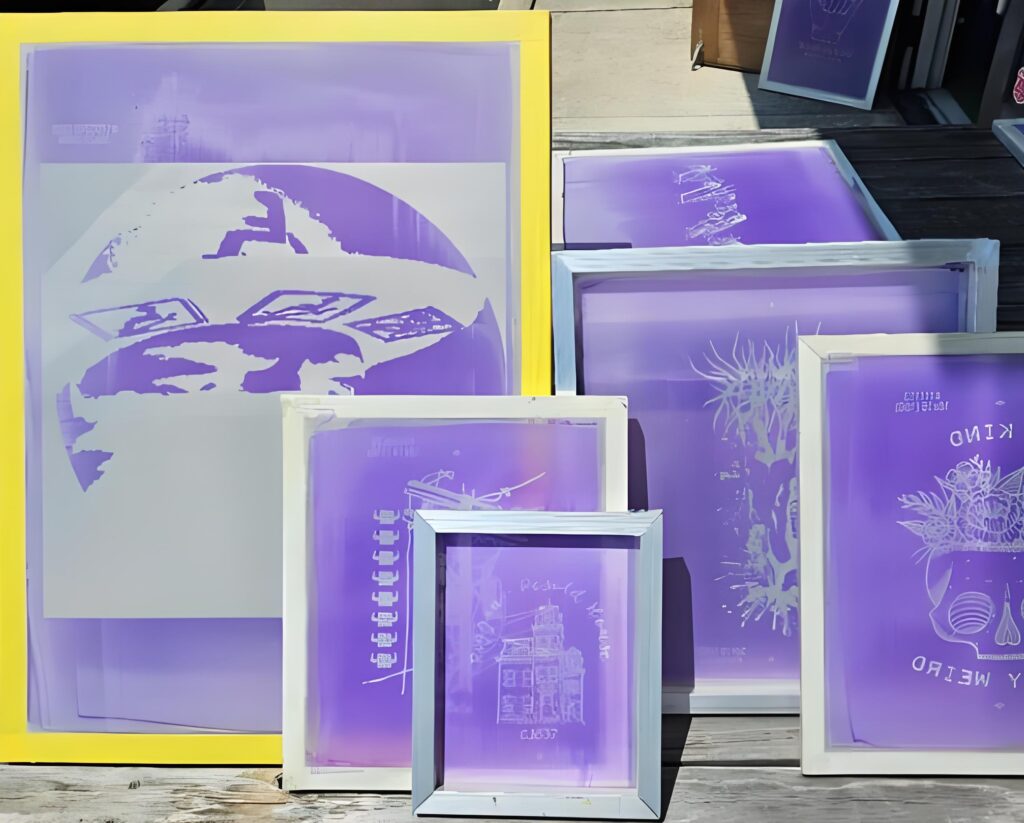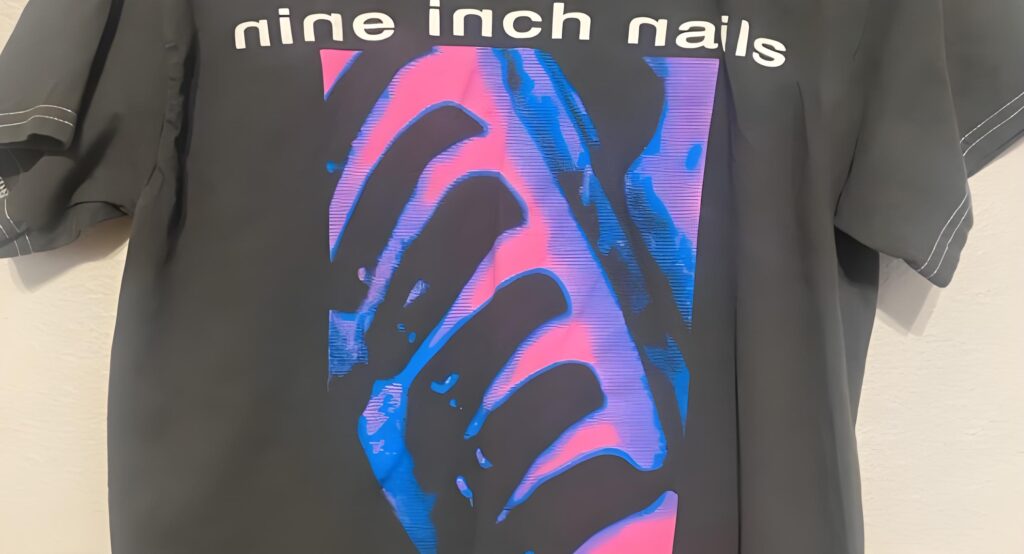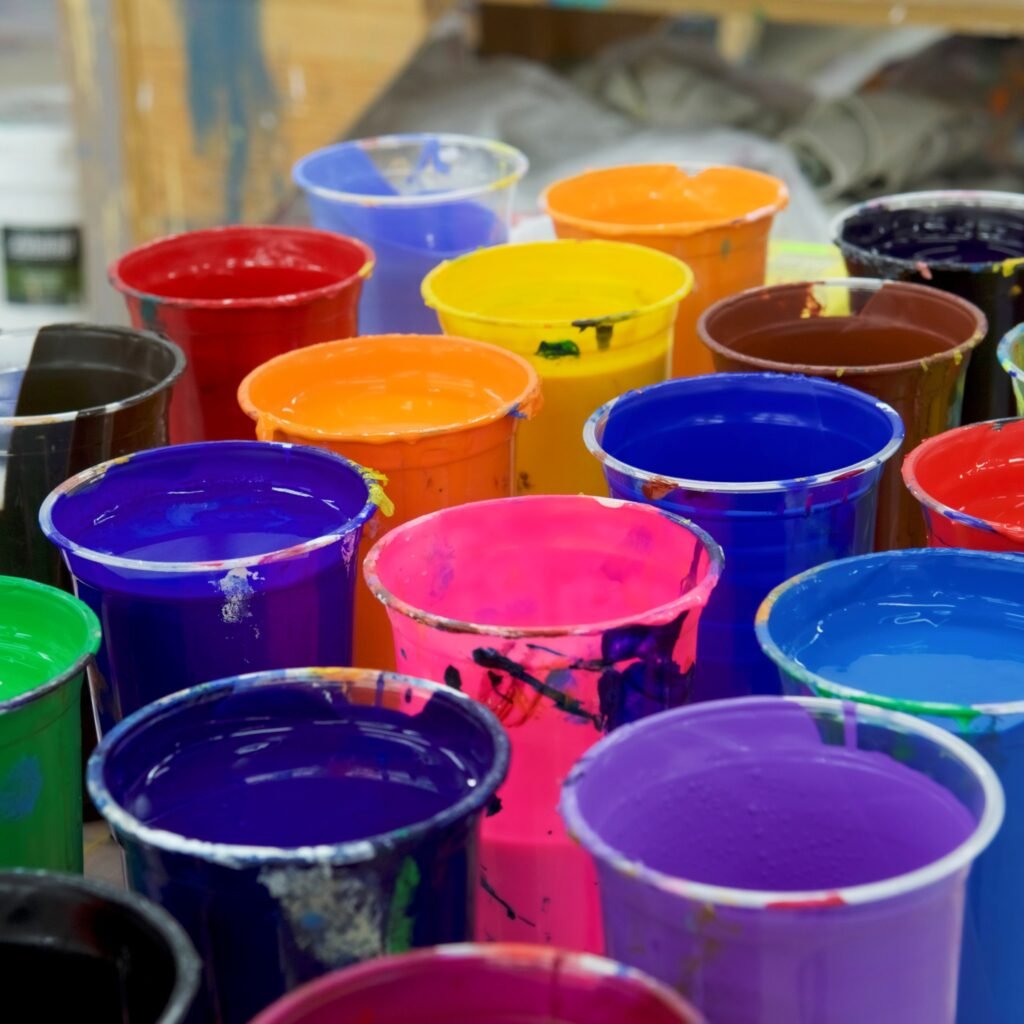திரை அச்சிடுதல் is more than just slapping some ink onto a blouse or poster—it’s an art, a technology, and a thriving enterprise that powers the whole lot from the best band t-shirts to complex cloth paintings and formidable branding on clothing. Whether you’re dreaming about starting your personal DIY print press at domestic or leveling up your clothing business with professional display screen printing machines, this article will give you the insider scoop. Worth analyzing? Absolutely! You’ll learn about every step of the display screen printing process, find out have to-have substances and device, and pick out up guidelines that would take your prints from newbie to top notch—all with the right display printing know-how.
பொருளடக்கம்
1.What Is Screen Printing?
Screen printing, now and again known as silk screening, is a printing method where ink is driven through a mesh screen the usage of a squeegee to transfer photos, text, or styles onto a extensive variety of surfaces like material, clothing, posters, or even vinyl. The system starts offevolved with creating a stencil (sometimes known as a display), which blocks unique regions so ink most effective passes through layout sections, producing sharp and shiny prints. The most common use is for t-shirts and different clothes, but you’ll locate display screen print magic on everything from tote baggage to pleasing occasion backdrops.
Because the display screen and stencil machine is so bendy, you may create multi-coloured, intricate, or tremendously durable prints. Unlike virtual printing, which builds images with tiny dots, screen printing lays down a stable, colourful layer of ink—ensuing in colors that pop and textures you could feel! This is why it’s preferred for large quantities or designs that demand lasting results.
2.Why Choose Screen Printing Over Other Printing Methods?
Wondering why the display screen print technique is so popular in the garb enterprise and past? One essential reason is durability. Since ink sits proper on pinnacle of the display screen—frequently the usage of plastisol or specialty inks—the layout survives wash after wash. Screen printing additionally excels at producing bold, regular shades. Compare this to virtual printing, where colours might also fade or seem less saturated on darkish fabrics.
Another gain is price efficiency for big batches. Once your screen and stencil are prepared, urgent hundreds of shirts or posters with the equal art work is quick and inexpensive. Plus, uniqueness inks (like metallic, glow-in-the-darkish, or even UV-reactive) open avenues for ingenious prints that other techniques without a doubt can’t suit.
You can also combine techniques—like adding warmth transfers or vinyl layers—to release specific, custom clothing. In quick, whilst you need reliability, richness, and a careeral look, screen printing stands out over alternatives.

3. Essential Supplies and Equipment for Quality Screen Printing
Quality display screen printing starts offevolved with the right supplies and device. Your primary toolkit ought to consist of displays (with wooden or aluminum frames), mesh of suitably selected thread count number, a squeegee for spreading ink, and some plastisol or water-primarily based ink. You’ll also need emulsion or picture emulsion to create your stencil.
If you’re all-in, don’t forget a complete screen printing kit, which commonly includes screens, frames, squeegees, emulsion, and even small printing presses for novices or domestic customers. However, the adventure doesn’t stop there: expert print shops often depend on sophisticated display printing machines and components and device constructed for better output and precision.
Don’t forget about about add-ons—like a heat gun or dryer for curing ink, tape to save you ink leaks, and cleaning equipment to maintain your display screen printing system easy and efficient. Investing inside the right display printing elements and equipment is the cornerstone of constant, exceptional consequences whenever.
4.The Role of Ink within the Screen Print Process
Ink is the coronary heart and soul of any screen print. The kind you select shapes the look, feel, and longevity of your cease product. Plastisol inks are a popular preference because of their durability and vibrancy. They take a seat atop the fabric, growing opaque, lengthy-lasting prints, especially ideal for ambitious t-blouse images and branded garb.
Water-based inks, alternatively, soak into the fibers of the material, frequently leaving a softer, greater “antique” hand. If your tasks name for strong point outcomes—suppose steel shine, puff textures, or UV-responsive factors—there’s an ink system for that too. The mystery sauce of display screen printing isn’t simply in pushing ink through the mesh but deciding on the right ink for each unique venture.
Don’t neglect the curing system. பிளாஸ்டிசால் மைகள் normally require warmness curing, often the use of a dryer or heat press, to completely adhere on your garment and prevent ink washout. Mastering your ink sport is key to generating pleasant screen printing consequences batch after batch.
5. How to Use Screens, Mesh, and Frames for Crisp Prints
The display screen itself includes a mesh—regularly nylon or polyester—tightly stretched throughout a sturdy body. The mesh count number (quantity of threads consistent with inch) determines how plenty ink can bypass thru, which immediately influences the sharpness and detail of your screen print. Lower mesh counts permit more ink thru (outstanding for ambitious, opaque coloration blocks), whilst higher counts are ideal for difficult stencils and great element.
Properly prepping your display screen (cleansing, degreasing, and drying) earlier than applying emulsion is important. A unfastened or poorly tensioned mesh received’t deliver first-class prints, no matter how properly your ink or squeegee approach. Always align your mesh tightly across the frame and frequently test for tears or wear spots to hold regular results.
Finally, position your stencil correctly on the display. The pinnacle of the display screen marks the orientation for your art work, making sure your designs land exactly wherein you want them on the material or poster each time.
6.Mastering the Use of Emulsion and Photo Emulsion
No dialogue of the display screen printing process is complete with out overlaying emulsion. This light-sensitive chemical is spread lightly across your mesh, forming the foundation in your stencil. Photo emulsion is the most commonplace kind used today, bearing in mind enormously detailed and precise designs.
Once you coat your display with emulsion, you’ll “burn” your artwork onto it the use of UV light. The mild hardens the emulsion anyplace your design isn’t present, and after publicity, a brief rinse with water washes away the unhardened emulsion, revealing your custom stencil.
Careful coping with—making use of a easy, even coat of emulsion, fending off dust or bubbles, and proper drying—is vital to save you ink leaks or fuzzy prints. Get this step right, and you pave the way for clean, detailed, and professional-level screen prints.
7. Screen Printing Kits: Which Kit Should You Choose?
A complete display screen printing package may be a recreation-changer for novices or small businesses. Typical kits comprise a mix of screens, mesh, frames, emulsion, squeegees, and novice-pleasant commands. Some even consist of starter packs of cloth ink, tape, and cleaning solutions, making them an all-in-one gateway to learning the display screen printing approach on shirts, cloth, or posters.
When choosing a package, don’t forget the dimensions of your projects and the extent of prints you plan to provide. DIY kits are great for hobbyists, presenting the essentials for a few t-shirts or tote bags, whilst greater advanced display printing kits cater to budding printers who want to ramp up manufacturing.
Compare kits based totally on their protected supplies—are the screens durable? Is the squeegee comfortable to maintain? Do you get each plastisol and water-primarily based inks to experiment with unique screenprinting effects? Picking the right kit units you up for a smoother, greater enjoyable display screen printing journey.
8.Step-by using-Step Guide to the Screen Printing Process: From Stencil to Print
Ready to print? Let’s destroy down the process:
- Prepare Your Screen: Clean and degrease thoroughly. Stretch the mesh tightly over the body.
- Apply Emulsion: Coat the display with photograph emulsion and allow it dry faraway from light.
- Create Your Stencil: Place your artwork on the organized display and reveal it to UV light. Rinse away the unexposed emulsion to show your layout.
- Set Up for Printing: Secure your screen onto the cloth or garment. Pour ink alongside the top of the display.
- Print: Use a squeegee to drag ink lightly throughout the stencil, forcing it through the open mesh onto your substrate.
- Cure the Ink: Depending in your ink (plastisol, water-based totally, etc.), therapy with a warmth press or dryer to “set” the print, making sure it lasts wash after wash.
- Clean Up: Remove excess ink, smooth your display screen, and reclaim your stencil if reusing the screen.
Attention to every step, from generating a easy stencil to efficaciously using your squeegee, ensures excellent display screen printing and stops commonplace complications like choppy prints, leaks, or diminished outcomes.
9. Troubleshooting: Prevent Ink Issues and Achieve Consistent Results
Even seasoned printers run into issues. Common troubles encompass ink no longer adhering properly, fuzzy edges, or paintings popping out patchy. To prevent ink from seeping where it shouldn’t, usually inspect your emulsion layer for holes or bubbles and repair leaks with tape before printing.
If your print is lacking detail or looks “muddy,” test your mesh rely—too-low mesh can allow an excessive amount of ink via, especially on finer designs. Squeegee strain additionally topics; too difficult, and you could blur your photo, too smooth, and the ink gained’t switch absolutely.
Regularly smooth your displays, stencils, and frames, and shop ink well to preserve it from drying out or thickening. Consistency is the call of the game: the proper resources, easy display screen, and precision in every step will come up with seasoned-degree effects each time.
10.Heat Transfers, Vinyl, and Screenprinting Accessories: Combining Techniques
Modern screen printing isn’t just about ink and mesh. By blending warmness transfers, vinyl utility, or maybe elements of embroidery, you could create apparel and cloth items with layers of texture and fascinating outcomes.
Some display screen printing machines are designed to work hand-in-hand with digital printers or warmness presses, increasing your innovative toolkit. Adding vinyl lettering as an accent is in particular famous for personalised t-shirts or small-run garb. Heat transfers assist you to observe pre-published snap shots the usage of a warmness press—best for multi-coloration or targeted designs that is probably difficult with traditional display screen printing.
Accessories like dryers, registration structures, or forte frames can streamline your print manner, accelerate manufacturing, and push your work into the area of genuine expert quality.h your work into the realm of true professional quality.
11. FAQ: Screen Printers and DIY Printing—Your Top Questions Answered
Can I start display printing at domestic?
Absolutely! Many screen printing kits are tailor-made to the DIY enthusiast and include everything you want first of all simple press-and-print projects.
Is display screen printing simplest for t-shirts?
No way—screen print techniques paintings on posters, canvas, tote baggage, cloth pieces for embroidery, vinyl, and greater.
What’s the difference among plastisol vs. Water-based totally inks?
Plastisol offers opaque, long-lasting consequences on dark or mild clothes, at the same time as water-based inks soak into the fabric for a softer finish.
How do commercial display screen printing machines vary from small kits?
Professional printing machines provide faster turnaround and better output. They also have particular registration, a couple of coloration stations, and automatic drying to reinforce first-rate and pace for companies.
Can display screen printing be blended with virtual printing?
Yes, hybrid strategies are at the upward thrust, blending the strengths of each tactics for complex or high-volume garb and cloth initiatives.
Conclusion: Take Your Garment and Apparel Printing to the Next Level
Let’s wrap it up with the necessities:
- Screen printing is a fingers-on printing approach that shines in clothing and garment work for its vibrant, durable prints.
- Choose the proper ink (plastisol, water-based totally, or forte) on your project and be sure to apply a fine mesh display screen and sturdy frame.
- Mastering emulsion application and stencil advent is important for sharp, special prints.
- Screen printing kits are an on hand entry point—begin with a DIY package or pass pro with advanced display printing machines and presses.
- Combine screen printing with heat transfers, vinyl, or embroidery to style unique, custom garb or material items.
- Cleanliness, the right display screen printing resources and system, and interest to element are the principles of regular, fine display screen printing.
- Whether you’re printing one shirt or thousands of t-shirts, the method, with its tactile artistry and funky technical touches, remains a staple of the screen printing industry.
Armed with this understanding and the right gear, you’ll have everything you want to make each print count!



